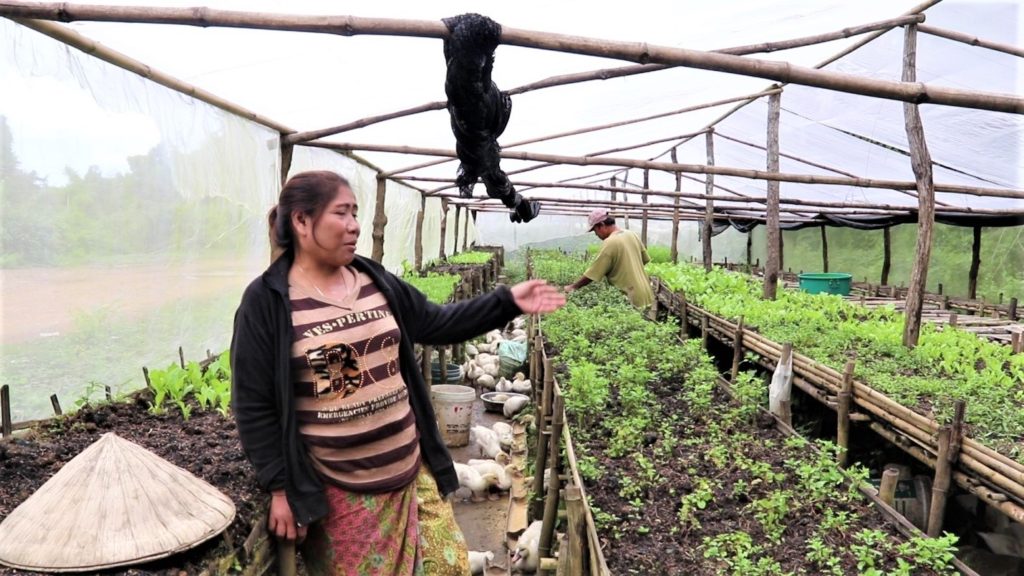Champasack, Laos – In recent years, the shed house was introduced to farmers as an alternative technology for growing vegetables during the rainy season because the shed house is roofed with transparent plastic. However, due to the use of plastic, the temperature in the house increases, which is not suitable for many parts of the country that has hot weather throughout the year. In addition to this, building a plastic shed house is quite expensive because it can only be used for a single purpose.
To reduce the heat and to diversify the utilization of the shed house, Lao Farmer Network (LFN) built on local knowledge to develop an integrated shed house using other materials. The shed house is 8 meters wide and 30 meters long and roofed and walled with a fine net. Inside the shed, four rows of garden beds are constructed—with one-meter wide of the bed lifted up from the ground for about 80 centimeters to allow spaces under the garden bed for raising animals such as ducks or frogs. The technology is being piloted in Sehong village, Khong district, Champasack province.
Sone, head of Sehong agriculture producer group, said that she never tried this technology before. In the past, she grew vegetables in broken containers which worked very well, but never thought that she can do that on such a big scale. Using the integrated shed house, she grows various kinds of vegetables and at the same time raises about 100 ducks in the shed for 3 months. “I can earn about USD 100 from selling vegetables and about USD 600 from selling ducks—all grown in the same shed house,” she said.
LFN President Khammoune Xaymany said, “It is so hot in the conventional shed house that is why vegetables cannot grow well in the plastic-roofed shed house. With this simple technology, farmers can now grow vegetables all year long with the right temperature while raising ducks in the same shed house.”
The advantages of using an integrated shed house include building it is not costly because local materials such as bamboo can be used; farmers can generate more income from farming and raising animals simultaneously; in the shed house, weeds are also more controlled, thus it requires less labor for weeding, and the shed is also a good pest control because insects cannot get in easily. It is also important to note that this technology builds on local knowledge and practices.
However, farmers interested in executing this technology may face challenges such as lack of materials available in the market (e.g. fine net for roofing and walling. More organic fertilizer is needed in the garden beds to maintain a good yield. The garden inside the shed also needs to be watered regularly. Despite these challenges, this technology is recommended especially for the farmers in areas with tropical weather. #





Comments are closed